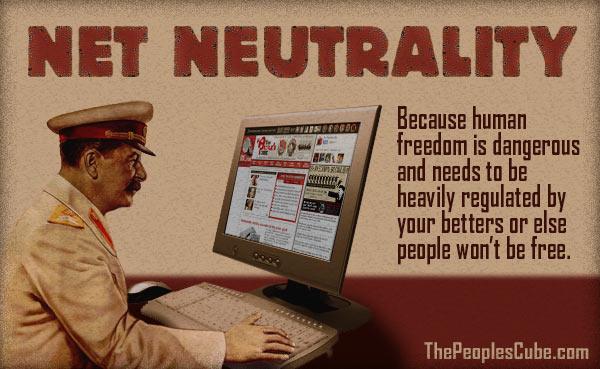GoPro
360* GoPro:
http://streif-film.at/aut/fahr-die-streif/interaktive-360nbspstreif-abfahrt/
Digital Literacy for St. Cloud State University
360* GoPro:
http://streif-film.at/aut/fahr-die-streif/interaktive-360nbspstreif-abfahrt/
http://www.vox.com/xpress/2014/11/12/7196761/net-neutrality-lobbying
/cdn0.vox-cdn.com/uploads/chorus_asset/file/2448670/net_neutrality_lobbying_chart.0.png)
Consumers generally connect to the internet one of two ways. They can subscribe to a residential broadband service from a company such as Time Warner Cable. Or they can subscribe to wireless internet access from companies such as Sprint.
These companies have spent billions of dollars laying cables in the ground (in the case of residential internet access) or erecting cell phone towers (for wireless access) to ensure that customers have fast, reliable service.
Network neutrality is the idea that these companies should treat all internet traffic equally. It says your ISP shouldn’t be allowed to block or degrade access to certain websites or services, nor should it be allowed to set aside a “fast lane” that allows content favored by the ISP to load more quickly than the rest.
Since the term was coined more than a decade ago, it has been at the center of the debate over internet regulation. Congress, the Federal Communications Commission(FCC), and the courts have all debated whether and how to protect network neutrality.
Advocates argue that network neutrality lowers barriers to entry online, allowing entrepreneurs to create new companies like Google, Facebook, and Dropbox. But critics warn that regulating the broadband market could be counterproductive, discouraging investment in internet infrastructure and limiting the flexibility of ISPs themselves to innovate.
In January, an appeals court invalidated FCC regulations designed to protect network neutrality. The agency is currently considering how to respond.
https://medium.com/backchannel/netflix-is-a-data-hog-6e790140b189

http://theoatmeal.com/blog/net_neutrality
Plan for today, Mon, Nov 17 class session:
Parent involvement in their children’s social emotional and academic development.
Plan for Sylvester Lamin’s course:
http://www.fastcompany.com/3037962/then-and-now/the-truth-about-teenagers-the-internet-and-privacy
danah boyd, a professor at Harvard University’s Berkman Center for the Internet and Society, argues that teenagers closely scrutinize what they share online because it is a way for them to negotiate their changing identities. In her book, It’s Complicated: The Social Lives of Networked Teens, she describes how teenagers carefully curate their feeds based on the audience they are trying to reach.
Adolescents have been migrating away from Facebook and Twitter over the last few years, showing preference for sites like Snapchat, Whisper, Kik, and Secret that provide more anonymity and privacy. Part of this transition can be explained by the fact that the older social media sites stopped being cool when parents joined them, but perhaps another reason could be that teenagers growing up in the post-Snowden era implicitly understand the value of anonymity. For teens, it’s not a matter of which platform to use, but rather which works best in a particular context.
| Traffic Share (Mobile Phone Operating System) | ||
| Operating System | Share of Traffic | Share of Revenue |
| Android |
57.64% |
41.77% |
| iOS |
30.2 |
51.20 |
| Other |
6.37 |
5.91 |
| Symbian |
4.37 |
0.47 |
| BlackBerry |
1.20 |
0.49 |
| Windows |
0.22 |
0.12 |
| Source: Opera Mediaworks, October 2014 | ||
Social Networking is still the most popular category in mobile advertising, accounting for about 1 in 5 ad impressions. At the same time, Music, Video and Media sites and apps drive the most revenue, with 23%
http://blogs.edweek.org/edweek/DigitalEducation/2014/10/screen_time_early_learners_RAND.html
screen time as the sole measure of what’s OK for children is no longer adequate, the RAND researchers argue that screen-time limits shoudn’t go the way of the VCR:
Limits on screen time may remain important in restricting use that is passive, sedentary, or noneducational, and they may also prove useful in ensuring that children engage in a balanced combination of activities.
However, a more-comprehensive definition of developmentally appropriate technology use will empower ECE providers and families to make better decisions about the ways in which young children use technology–and help maximize the benefits young children receive from this use.
my note: information on Pinterest still goes the other direction. E.g.:
http://www.pinterest.com/pin/284923113897755173/

Here is more on drones at our blog:
http://www.bluefirebroadband.com/blog/broadband-speed-improvement/

Minnesota:
Average Speed (Mbps)
2009: 12.45
2014: 24.23
Average price (per Mbps)
2009: $5.29
2014: $3.13
Speed Increase
195%
Price Decrease
41%
http://bgr.com/2014/07/03/u-s-broadband-speeds-vs-global-speeds/
Hong Kong, Switzerland and the Netherlands rounded out the top 5 with average Internet speeds of 13.3Mbps, 12.7Mbps and 12.4Mbps, respectively.
America’s national average of 10.5Mbps placed it in the No. 12 position globally.
South Korea continues to remain the connection king, with an average connection speed of 15.7Mbps. The U.S., meanwhile, doesn’t make it into the top-10 countries (it’s ranked 12th) but at least it’s speeding up